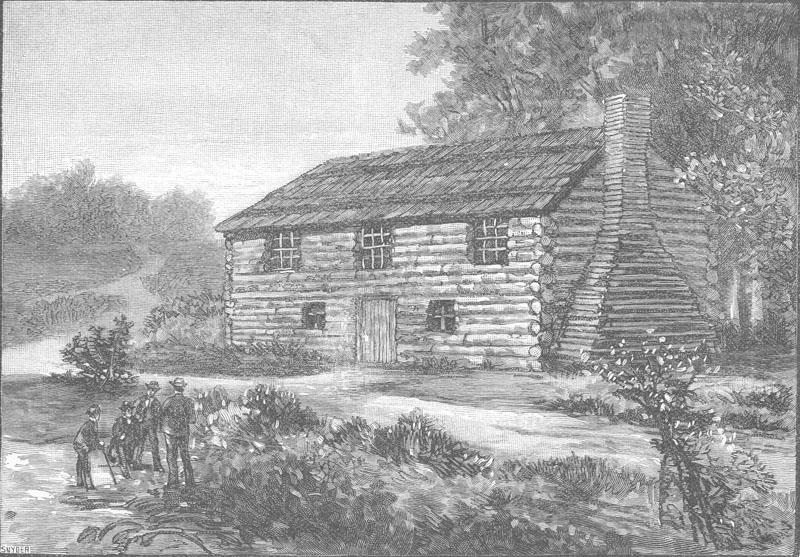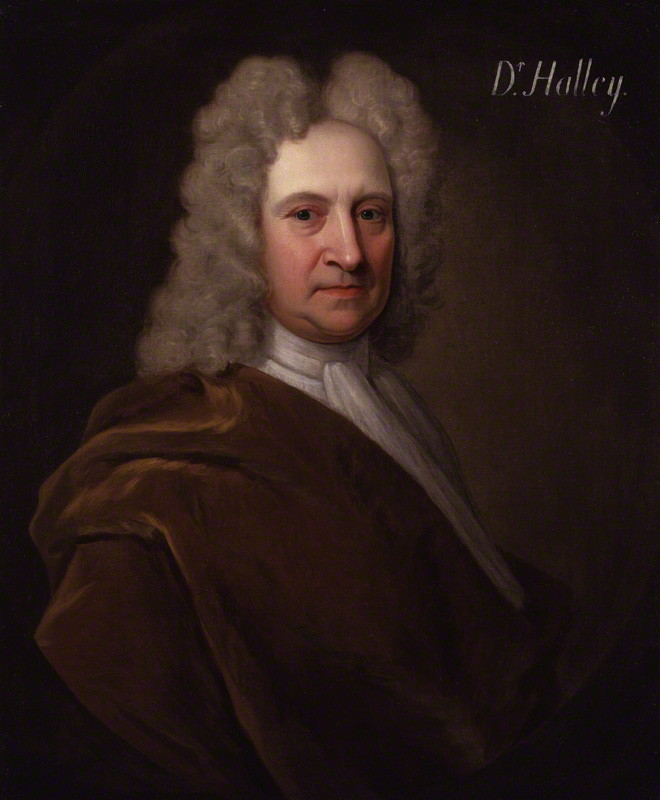|
J. Q. Stewart
John Quincy Stewart (September 10, 1894 – March 19, 1972) was an American astrophysicist. He obtained his Ph.D. in physics from Princeton University in 1919. He taught astrophysics at Princeton from 1921 until he retired in 1963. Stewart was a civilian aeronautical engineer, an Army 1st Lieutenant, and later served as a chief instructor in the Army Engineering School, during World War I. He was later a research engineer in the American Telephone and Telegraph Company. He became interested in social physics in 1946, (first investigated in 1693 by astronomer Edmond Halley), demonstrating the use of physical laws in the area of social sciences, for example, demographic gravitation.Stewart, John Q., "Demographic Gravitation: Evidence and Applications", Sociometry, Vol. 11, No. 1/2. (February – May, 1948), pp. 31–5/ref> He co-wrote an influential two-volume textbook in 1927 with Raymond Smith Dugan and Henry Norris Russell Henry Norris Russell ForMemRS HFRSE FRA ... [...More Info...] [...Related Items...] OR: [Wikipedia] [Google] [Baidu] |
Physics
Physics is the natural science that studies matter, its fundamental constituents, its motion and behavior through space and time, and the related entities of energy and force. "Physical science is that department of knowledge which relates to the order of nature, or, in other words, to the regular succession of events." Physics is one of the most fundamental scientific disciplines, with its main goal being to understand how the universe behaves. "Physics is one of the most fundamental of the sciences. Scientists of all disciplines use the ideas of physics, including chemists who study the structure of molecules, paleontologists who try to reconstruct how dinosaurs walked, and climatologists who study how human activities affect the atmosphere and oceans. Physics is also the foundation of all engineering and technology. No engineer could design a flat-screen TV, an interplanetary spacecraft, or even a better mousetrap without first understanding the basic laws of physics ... [...More Info...] [...Related Items...] OR: [Wikipedia] [Google] [Baidu] |
Princeton University
Princeton University is a private research university in Princeton, New Jersey. Founded in 1746 in Elizabeth as the College of New Jersey, Princeton is the fourth-oldest institution of higher education in the United States and one of the nine colonial colleges chartered before the American Revolution. It is one of the highest-ranked universities in the world. The institution moved to Newark in 1747, and then to the current site nine years later. It officially became a university in 1896 and was subsequently renamed Princeton University. It is a member of the Ivy League. The university is governed by the Trustees of Princeton University and has an endowment of $37.7 billion, the largest endowment per student in the United States. Princeton provides undergraduate and graduate instruction in the humanities, social sciences, natural sciences, and engineering to approximately 8,500 students on its main campus. It offers postgraduate degrees through the Princeton Schoo ... [...More Info...] [...Related Items...] OR: [Wikipedia] [Google] [Baidu] |
Astrophysics
Astrophysics is a science that employs the methods and principles of physics and chemistry in the study of astronomical objects and phenomena. As one of the founders of the discipline said, Astrophysics "seeks to ascertain the nature of the heavenly bodies, rather than their positions or motions in space–''what'' they are, rather than ''where'' they are." Among the subjects studied are the Sun, other stars, galaxies, extrasolar planets, the interstellar medium and the cosmic microwave background. Emissions from these objects are examined across all parts of the electromagnetic spectrum, and the properties examined include luminosity, density, temperature, and chemical composition. Because astrophysics is a very broad subject, ''astrophysicists'' apply concepts and methods from many disciplines of physics, including classical mechanics, electromagnetism, statistical mechanics, thermodynamics, quantum mechanics, relativity, nuclear and particle physics, and atomic a ... [...More Info...] [...Related Items...] OR: [Wikipedia] [Google] [Baidu] |
World War I
World War I (28 July 1914 11 November 1918), often abbreviated as WWI, was List of wars and anthropogenic disasters by death toll, one of the deadliest global conflicts in history. Belligerents included much of Europe, the Russian Empire, the United States, and the Ottoman Empire, with fighting occurring throughout Europe, the Middle East, Africa, the Pacific Ocean, Pacific, and parts of Asia. An estimated 9 million soldiers were killed in combat, plus another 23 million wounded, while 5 million civilians died as a result of military action, hunger, and disease. Millions more died in Genocides in history (World War I through World War II), genocides within the Ottoman Empire and in the Spanish flu, 1918 influenza pandemic, which was exacerbated by the movement of combatants during the war. Prior to 1914, the European great powers were divided between the Triple Entente (comprising French Third Republic, France, Russia, and British Empire, Britain) and the Triple A ... [...More Info...] [...Related Items...] OR: [Wikipedia] [Google] [Baidu] |
Astronomer
An astronomer is a scientist in the field of astronomy who focuses their studies on a specific question or field outside the scope of Earth. They observe astronomical objects such as stars, planets, moons, comets and galaxies – in either observational (by analyzing the data) or theoretical astronomy. Examples of topics or fields astronomers study include planetary science, solar astronomy, the origin or evolution of stars, or the formation of galaxies. A related but distinct subject is physical cosmology, which studies the Universe as a whole. Types Astronomers usually fall under either of two main types: observational and theoretical. Observational astronomers make direct observations of celestial objects and analyze the data. In contrast, theoretical astronomers create and investigate models of things that cannot be observed. Because it takes millions to billions of years for a system of stars or a galaxy to complete a life cycle, astronomers must observe snapsh ... [...More Info...] [...Related Items...] OR: [Wikipedia] [Google] [Baidu] |
Edmond Halley
Edmond (or Edmund) Halley (; – ) was an English astronomer, mathematician and physicist. He was the second Astronomer Royal in Britain, succeeding John Flamsteed in 1720. From an observatory he constructed on Saint Helena in 1676–77, Halley catalogued the southern celestial hemisphere and recorded a transit of Mercury across the Sun. He realised that a similar transit of Venus could be used to determine the distances between Earth, Venus, and the Sun. Upon his return to England, he was made a fellow of the Royal Society, and with the help of King Charles II of England, Charles II, was granted a master's degree from University of Oxford, Oxford. Halley encouraged and helped fund the publication of Isaac Newton's influential ''Philosophiæ Naturalis Principia Mathematica'' (1687). From observations Halley made in September 1682, he used Newton's laws of motion to compute the periodicity of Halley's Comet in his 1705 ''Synopsis of the Astronomy of Comets''. It was named afte ... [...More Info...] [...Related Items...] OR: [Wikipedia] [Google] [Baidu] |
Demographic Gravitation
Demographic gravitation is a concept of "social physics", introduced by Princeton University astrophysicist John Quincy Stewart in 1947.Stewart, John Q., "Demographic Gravitation: Evidence and Applications," ''Sociometry'', Vol. 11, No. 1/2. (February–May 1948), pp. 31–58. It is an attempt to use equations and notions of classical physics, such as gravity, to seek simplified insights and even laws of demographic behaviour for large numbers of human beings. A basic conception within it is that large numbers of people, in a city for example, actually behave as an attractive force for other people to migrate there. It has been related to W. J. Reilly's law of retail gravitation, George Kingsley Zipf's Demographic Energy, and to the theory of trip distribution through gravity models. Writing in the journal '' Sociometry'', Stewart set out an "agenda for social physics." Comparing the microscopic versus macroscopic viewpoints in the methodology of formulating physical laws ... [...More Info...] [...Related Items...] OR: [Wikipedia] [Google] [Baidu] |
Raymond Smith Dugan
Raymond Smith Dugan (May 30, 1878 – August 31, 1940) was an American astronomer and discoverer of minor planets. His parents were Jeremiah Welby and Mary Evelyn Smith and he was born in Montague in the U.S. state of Massachusetts. His undergraduate and Masters was from Amherst College in Massachusetts in 1899 and 1902. Dugan then received his Ph.D. dissertation in 1905 at the '' Landessternwarte Heidelberg-Königstuhl'' (Königstuhl Observatory, near Heidelberg) at the University of Heidelberg. at www.lsw.uni-heidelberg.de At the time, the observatory at Heidelberg was a center of discovery under |
Henry Norris Russell
Henry Norris Russell ForMemRS HFRSE FRAS (October 25, 1877 – February 18, 1957) was an American astronomer who, along with Ejnar Hertzsprung, developed the Hertzsprung–Russell diagram (1910). In 1923, working with Frederick Saunders, he developed Russell–Saunders coupling, which is also known as LS coupling. Life Russell was born on 25 October 1877, at Oyster Bay, New York, the son of Rev Alexander Gatherer Russell (1845-1911) and his wife, Eliza Hoxie Norris. After graduating from George School in 1895, he studied astronomy at Princeton University, obtaining his B.A. In 1897 and his doctorate in 1899, studying under Charles Augustus Young. From 1903 to 1905, he worked at the Cambridge Observatory with Arthur Robert Hinks as a research assistant of the Carnegie Institution and came under the strong influence of George Darwin. He returned to Princeton to become an instructor in astronomy (1905–1908), assistant professor (1908–1911), professor (1911–1927) and res ... [...More Info...] [...Related Items...] OR: [Wikipedia] [Google] [Baidu] |
1894 Births
Events January–March * January 4 – A military alliance is established between the French Third Republic and the Russian Empire. * January 7 – William Kennedy Dickson receives a patent for motion picture film in the United States. * January 9 – New England Telephone and Telegraph installs the first battery-operated telephone switchboard, in Lexington, Massachusetts. * February 12 ** French anarchist Émile Henry sets off a bomb in a Paris café, killing one person and wounding twenty. ** The barque ''Elisabeth Rickmers'' of Bremerhaven is wrecked at Haurvig, Denmark, but all crew and passengers are saved. * February 15 ** In Korea, peasant unrest erupts in the Donghak Peasant Revolution, a massive revolt of followers of the Donghak movement. Both China and Japan send military forces, claiming to come to the ruling Joseon dynasty government's aid. ** At 04:51 GMT, French anarchist Martial Bourdin dies of an accidental detonation of his own ... [...More Info...] [...Related Items...] OR: [Wikipedia] [Google] [Baidu] |
1972 Deaths
Year 197 ( CXCVII) was a common year starting on Saturday (link will display the full calendar) of the Julian calendar. At the time, it was known as the Year of the Consulship of Magius and Rufinus (or, less frequently, year 950 '' Ab urbe condita''). The denomination 197 for this year has been used since the early medieval period, when the Anno Domini calendar era became the prevalent method in Europe for naming years. Events By place Roman Empire * February 19 – Battle of Lugdunum: Emperor Septimius Severus defeats the self-proclaimed emperor Clodius Albinus at Lugdunum (modern Lyon). Albinus commits suicide; legionaries sack the town. * Septimius Severus returns to Rome and has about 30 of Albinus's supporters in the Senate executed. After his victory he declares himself the adopted son of the late Marcus Aurelius. * Septimius Severus forms new naval units, manning all the triremes in Italy with heavily armed troops for war in the East. His soldiers ... [...More Info...] [...Related Items...] OR: [Wikipedia] [Google] [Baidu] |




